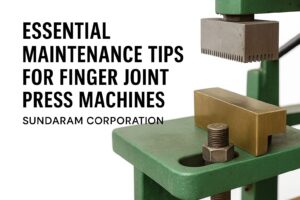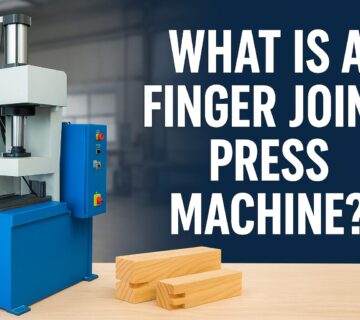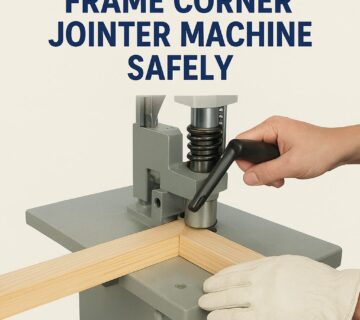Essential Maintenance Tips for Finger Joint Press Machines – Sundaram Corporation
Finger joint press machines play a pivotal role in woodworking and solid wood manufacturing, creating strong, seamless joints from smaller wood pieces. However, like any advanced equipment, they deliver their best only when maintained with diligence. At Sundaram Corporation, we emphasize that proper maintenance is key to maximizing efficiency, safety, and longevity for your finger joint press.

- Regular Cleaning: The First Line of Defense
Dust and wood particles accumulate rapidly during finger jointing. A daily wipe-down with a dry cloth at the end of each shift helps keep critical components free from debris. Weekly deep cleans using a soft brush and mild detergent will reach crevices and remove settled dust, reducing the risk of jams or inaccurate joints. Always dry components thoroughly after cleaning to prevent rust.
- Lubrication of Moving Parts
All moving mechanisms—cutters, bearings, drive chains, and hydraulic parts—require manufacturer-recommended lubricants at scheduled intervals (typically every 40-50 operating hours). Proper lubrication reduces friction, prevents premature wear, and ensures smooth operation. Avoid over-lubricating, which can attract dust and lead to sticky residues.
- Inspect Cutters, Blades, and Clamping Systems
Check the alignment and calibration of cutter heads frequently. Dull, damaged, or misaligned cutters not only compromise joint quality but also strain the machine. Replace worn cutters and check the clamping systems to ensure wood pieces are held securely—loose hold can cause operational errors or damage to the finished product.
- Monitor Hydraulic and Pneumatic Systems
Finger joint presses often use hydraulic or pneumatic clamping. Monitor fluid levels, inspect hoses for leaks, and routinely check system pressure. Change hydraulic oil based on manufacturer guidance—some recommend after every 250 hours initially and then every 2,000 working hours. Leaks or pressure drops must be fixed immediately to prevent accidents and maintain press efficiency.
- Tighten Fasteners and Inspect Structural Components
Loose bolts and screws can cause vibration, alignment issues, and even machine breakdowns. At least monthly, check and tighten all fasteners, especially in high-stress areas like the press frame and clamp mounts. Inspect the machine structure for any cracks or unusual stress marks.
- Follow Electrical Safety Checks
Periodically inspect electrical connections for looseness or signs of wear. Replace any damaged wires promptly and ensure all safety switches and emergency stops function correctly. Faulty electrical systems are a leading cause of downtime and operational hazards.
- Replace and Calibrate Worn Parts Promptly
Any worn or damaged component—from seals and bushings to guides and limit switches—should be replaced quickly. Scheduled calibration of measuring systems and sensors ensures continued precision and product consistency.
- Keep a Maintenance Log
Maintain a detailed logbook capturing inspection dates, repairs, part replacements, and lubricating schedules. This not only helps with warranty claims but also enables proactive failure prevention and better planning for future overhauls.
Why Trust Sundaram Corporation Machines?
Sundaram Corporation finger joint press machines are built for durability and ease of maintenance, featuring robust engineering and accessible service points. By investing a little time up front in machine care, users save costs and gain the peace of mind that comes from uninterrupted, high-quality production.
Empower your woodworking business and maximize machine life. For maintenance support, spare parts, or service plans, contact our expert team at Sundaram Corporation. Quality that lasts—service you can trust.

